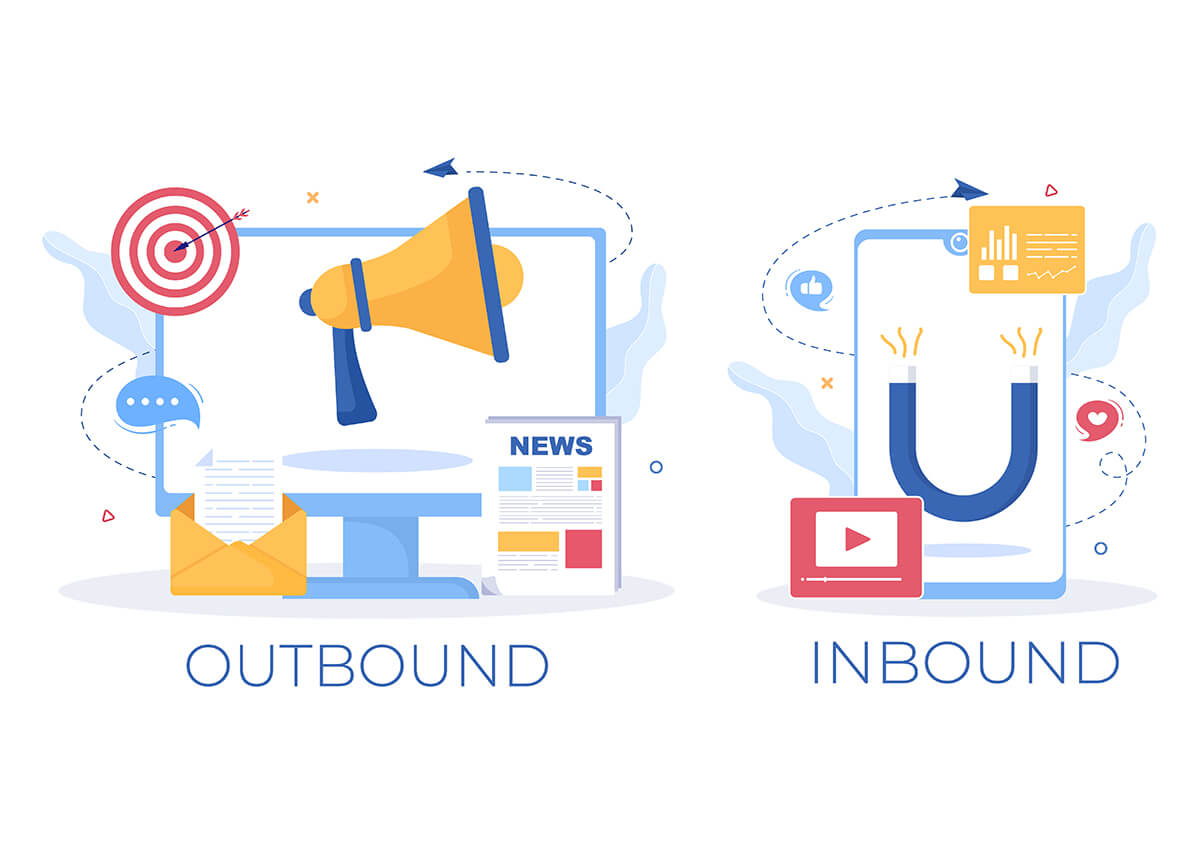As the housing market continues to boom, so does the roofing industry. But like any other business, success in the roofing industry isn’t just about providing a quality service. It’s also about generating high-quality leads. This brings us to the topic of inbound and outbound roofing lead generation. In this post, we’ll examine what each means, their unique characteristics, and how they differ.
What is Inbound Roofing Lead Generation?
Inbound lead generation is a pull strategy that aims to draw customers to your roofing business organically. It leverages valuable content marketing, roofing search engine optimization (SEO), and social media marketing techniques.
At its core, inbound lead generation focuses on building relationships with potential customers by offering them value. This could be in the form of informative blog posts, engaging social media content, or offering solutions to their problems via search engine results.
Inbound lead generation offers several advantages, one of which is cost-effectiveness. Because you are primarily creating and sharing content digitally, you typically spend less than on traditional marketing tactics. Moreover, inbound strategies offer a higher ROI, as they focus on attracting quality leads genuinely interested in your services.
However, inbound lead generation isn’t without challenges. It often requires a significant time investment, particularly in content creation and SEO. Yet, with patience and consistent effort, the benefits can far outweigh these initial efforts.
What is Outbound Roofing Lead Generation?
Outbound lead generation, in contrast, is a push strategy. This approach involves reaching out to potential customers directly, often through cold calling, direct mail, or trade shows.
Unlike inbound strategies that wait for the customer to come to you, outbound lead generation actively seeks out potential clients. It’s often faster than inbound methods in generating leads, making it useful for new businesses looking to establish a customer base quickly.
Outbound lead generation also has its advantages. It can provide immediate results and reach a large audience. It can also target specific demographics or geographic areas more precisely.
The challenge with outbound lead generation, however, is that it can be more expensive and yield a lower ROI. Since outbound methods may reach individuals not actively seeking roofing services, lead quality can also be a concern.
 Inbound vs. Outbound: What’s the Difference?
Inbound vs. Outbound: What’s the Difference?
The approach and strategy are the most apparent differences between inbound and outbound lead generation. Inbound strategies pull potential customers in, while outbound strategies push messages out.
Cost and time frame also differ significantly. Outbound strategies often require more upfront investment but yield quicker results. In contrast, inbound methods require time to develop but are more cost-effective in the long run.
Lastly, customer engagement varies between the two. Inbound methods foster a deeper connection with customers by providing valuable content and engaging them on platforms they frequent. Outbound methods, while capable of reaching a broad audience, can sometimes be viewed as intrusive and generate less engagement.
Conclusion
Both inbound and outbound lead generation methods have their place in a balanced roofing marketing strategy for roofing businesses. What’s most important is that roofing companies assess their specific needs, resources, and goals to decide the right mix of strategies.
By understanding the differences between inbound and outbound roofing lead generation, you can make more informed decisions and enhance your lead generation efforts for a more successful roofing business. Remember, it’s not a question of inbound OR outbound, but rather how much of each will best serve your business’s needs.






